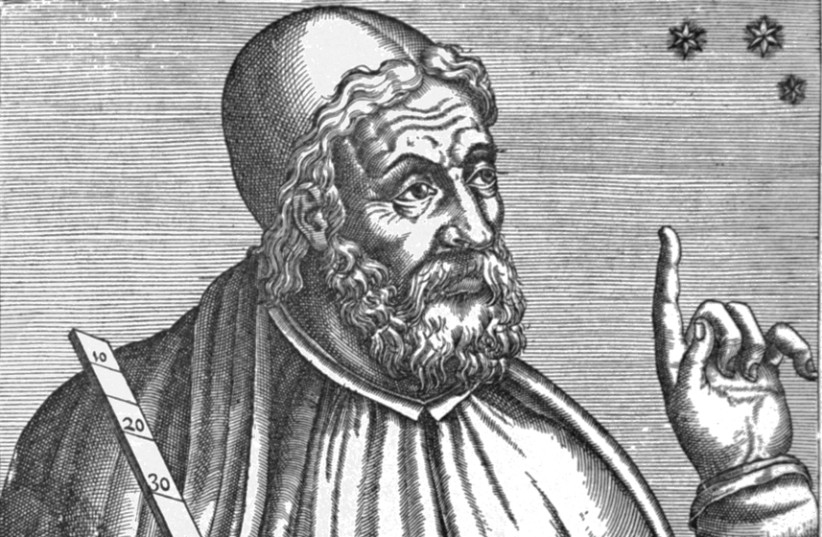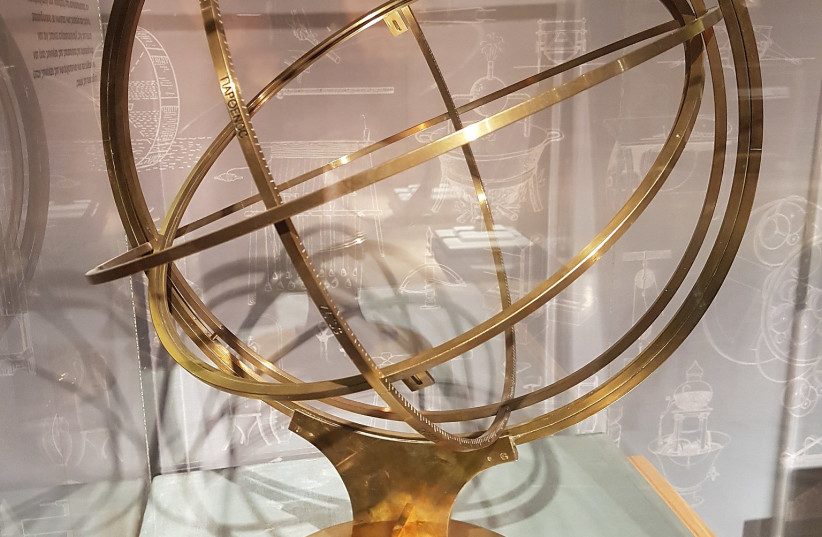Scientists finish 200-year decryption of ancient Greek-Egyptian treatise - study
The manuscript is believed to be a lost treatise by Ptolemy on his Meteoroscope. It was hidden within a copy of Etymologiae. Deciphering it has taken over 200 years.

Researchers have managed to decipher the manuscript of an ancient Egyptian mathematician and astronomer after over 200 years since its discovery, according to a new study.
The manuscript in question is thought to have been written by the Egyptian scholar of Greek descent Claudius Ptolemy during the first century CE and was discovered by a Roman Catholic cardinal Angelo Mai in 1819.
The findings of this study were published in the peer-reviewed academic journal Archive for History of Exact Sciences.
The effort to decipher this ancient Ptolemy manuscript was the culmination of over 200 years of work from numerous different researchers. The manuscript contained information regarding a scientific instrument known as a Meteoroscope.Decrypting the ancient Greek writings of an astronomical marvel: Ptolmey's Meteoroscope
Claudius Ptolmey, often known simply as Ptolmey, was one of the most important scholars of his era if not the ancient world as a whole.

A representation of Claudius Ptolemy (Illustrative). (credit: Wikimedia Commons)
Born in Roman-era Alexandria in Egypt, Ptolemy wrote dozens of scientific treatises covering everything from mathematics, geography, music, astronomy, optics and cartography. Some of these works would be preserved by Muslim and Byzantine scholars throughout the Medieval era.
However, not all of his work survived over the years, having gone missing – though some would eventually be rediscovered.
That seems to have been the case here, with Cardinal Mai having eventually rediscovered what seems to be a lost Ptolmey manuscript on pieces of parchment.
But there were issues that heavily complicated efforts to decipher its context. First and foremost is the fact that someone literally wrote on top of it. Specifically, someone seems to have taken the pages of Ptolmey's manuscript and used them to copy down the manuscript of Etymologiae, an etymological encyclopedia written by Spanish bishop and theologian Isadore of Seville – a text that was extremely influential in its own right.
Ironically, one thing Etymologiae is famous for today is that it summarized many famous classical texts that would eventually become lost to time, thus being the most accurate form of preservation for these texts.
So, too, did a copy of Etymologiae seemingly save this lost Ptolmey manuscript.
Why it was written over makes some sense – recycling parchment was done in the Middle Ages as a cost-saving measure.
However, this would eventually lead to another problem: Someone – almost certainly Mai, the study argued – tried to "clean" the parchment to make Ptolmey's original writing clearer by applying a reagent to several pages. This not only didn't make the original writing clearer, but it ended up covering the parchment with dark brown stains that made reading it even more difficult.
But efforts were made over the centuries to try and decipher it all. This included making careful copies of what was legible and comparing it to other Ptolmey treatises later discovered.
Finally, modern methods such as UV fluorescence and multispectral imaging were used in recent years to get a better look at the text that had remained illegible for so long.
So what did Ptolmey write about?
The long-lost manuscript contains information about a scientific instrument known as a Meteoroscope. This was a tool used by astronomers in antiquity to study stars and distances. In particular, Ptolmey's Meteoroscope could be used for a number of applications. These included telling time by predicting the equinox or solstice and ascertaining one's latitude and the location of a planet.
Ptolmey's Meteoroscope has been written about before. One of his most well-known treatises, the cartography manuscript known simply as Geography, had mentioned it, as did other ancient works.
But what hadn't survived was detailed information about what the Meteoroscope looked like and how it worked, other than the fact that it involved nine rings.
However, that mystery might finally be solved.
According to the translated text, the Meteoroscope's nine rings had the following names and functions:
- Ring bearing a suspension or "bearer": A fixed ring that was seemingly used to hang it from something
- Hektemoros or "six-parter": A ring fixed perpendicular to the bearer, intersecting it twice and equal in size
- "Horizon": This ring is fixed at the cardinal points to the bearer and the six-parter
- "Meridian": this is located inside the bearer and kept in place by flanges, but its orientation can be adjusted according to latitude
- "Revolver: This is inside the meridian ring and pivots on the points representing celestial poles
- "Zodiac": Equal in size to the revolver, it's fixed to it at right angles at specific points
- "Astrolabe": Located inside the revolver and zodiac rings, it pivots on the points representing ecliptic poles
- "Upright": Located inside the astrolabe and pivoting on the points of the revolver representing celestial poles. It can represent any arbitrary meridian
- "All-tilter": Located inside the upright and pivoting on the points representing where the abritrary meridian intersects with the equator, it can represent any horizon and set in any plane
Essentially, the completed Meteoroscope would look like a large series of rings located inside each other, tilting around as needed.

A reconstruction of what is thought to be a Ptolemy armillary sphere. (credit: Wikimedia Commons)
The tool's construction and usage were detailed in the manuscript, which seems to imply that the treatise was meant to help practitioners use it and to help teachers demonstrate how some conclusions are reached.
But there is still one problem with all of this:
Was it really Ptolemy who wrote it?
The researchers argue that this is the most likely case, noting the writer's very distinctive vocabulary usage that was more or less unique at the time. However, this is complicated by the fact that some crucial pages from the manuscript are missing, specifically the first and last pages. These are where one would normally find the author's name.
But if it is genuine, then it would help shed light on the scientific method of one of the ancient world's brightest and most influential minds.
-- Sent from my Linux system.
No comments:
Post a Comment